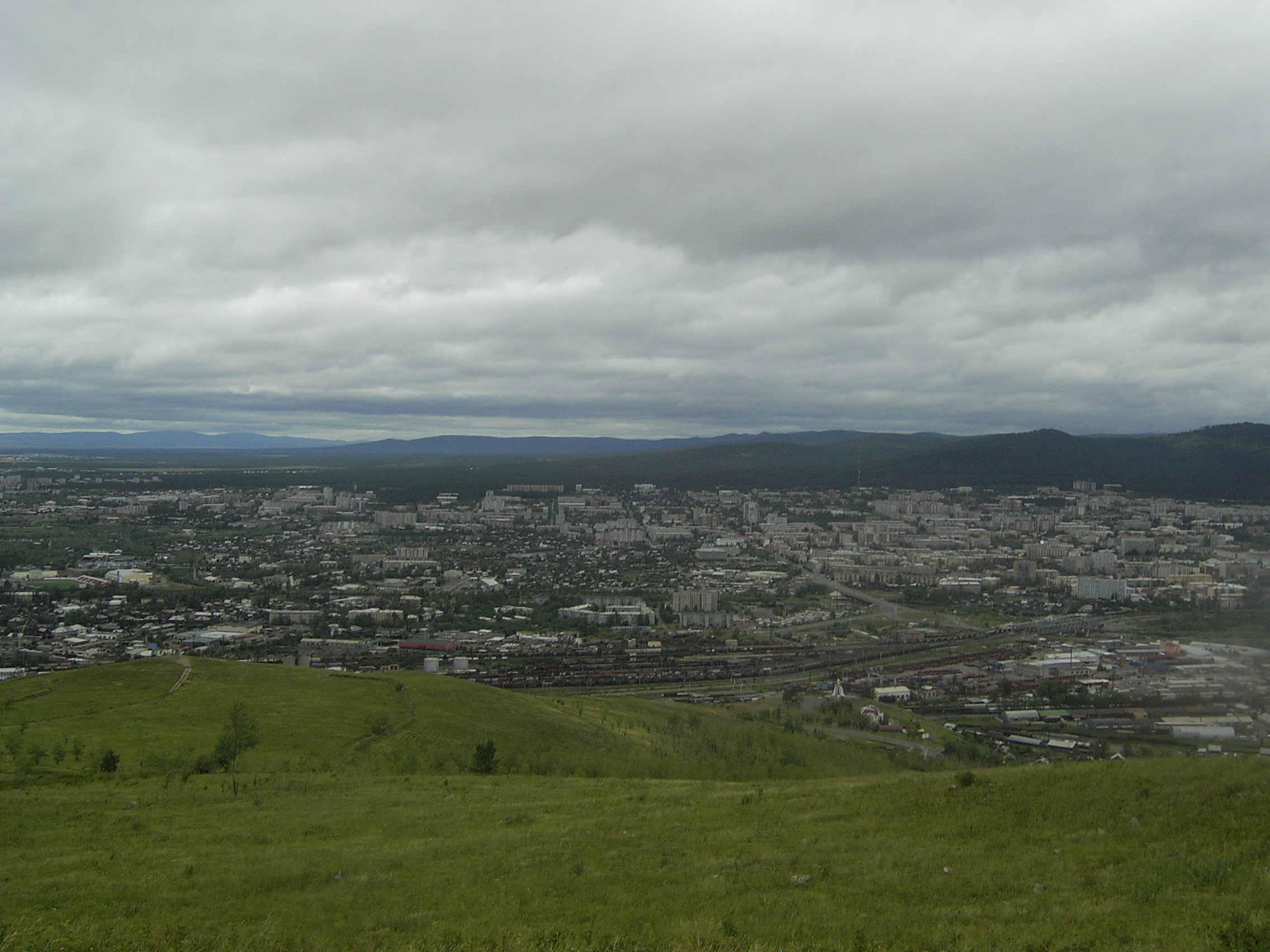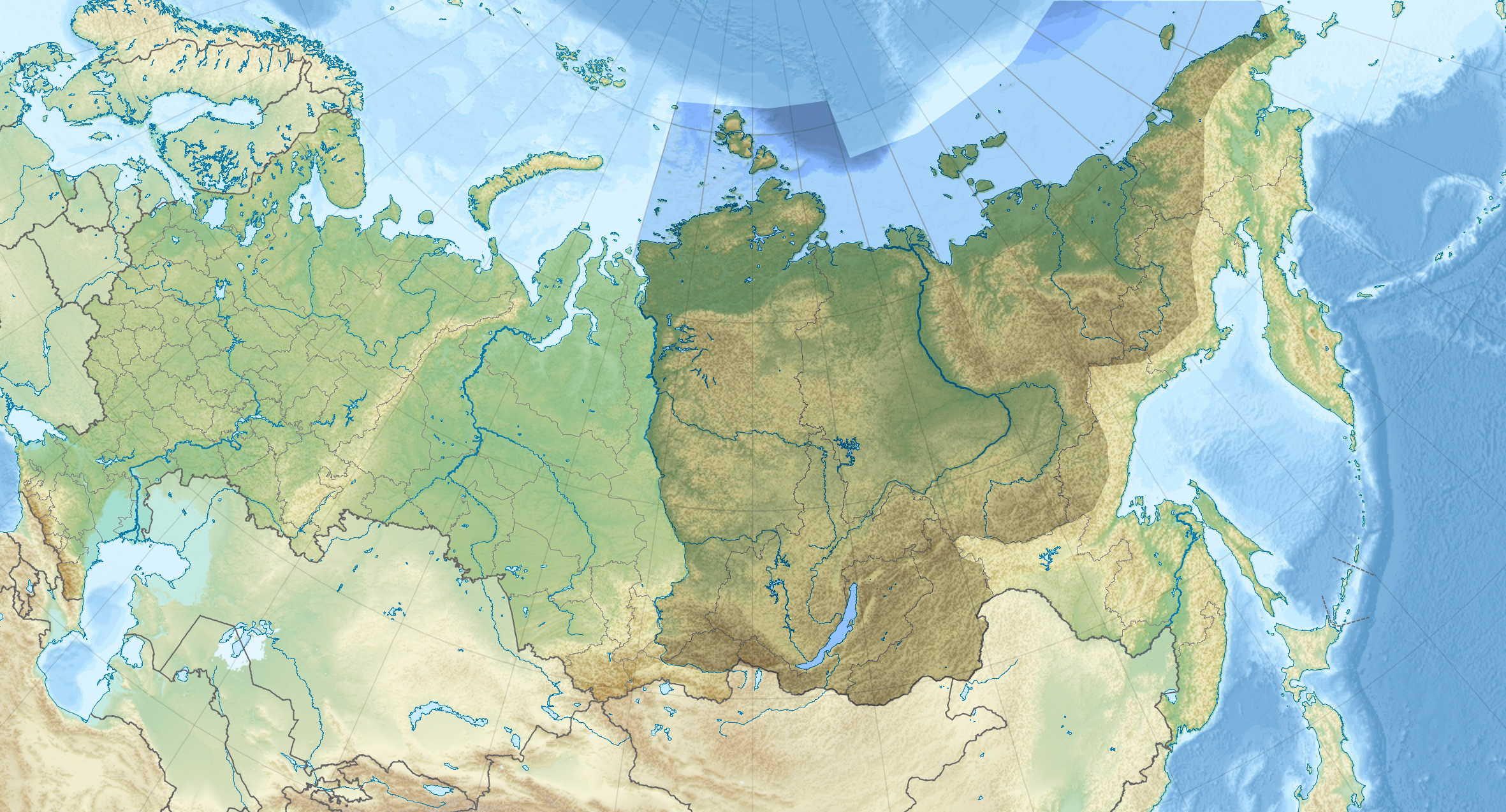Transbaikal on:
[Wikipedia]
[Google]
[Amazon]


 Transbaikal, Trans-Baikal, Transbaikalia ( rus, Забайка́лье, r=Zabaykal'ye, p=zəbɐjˈkalʲjɪ), or Dauria (, ''Dauriya'') is a mountainous region to the east of or "beyond" (trans-)
Transbaikal, Trans-Baikal, Transbaikalia ( rus, Забайка́лье, r=Zabaykal'ye, p=zəbɐjˈkalʲjɪ), or Dauria (, ''Dauriya'') is a mountainous region to the east of or "beyond" (trans-)
Radiation situation nearby the uranium mining facility
Environmental section poster P.9, 54th Annual Meeting of the Health Physics Society, 12–16 July 2009, Minneapolis, MN, USA. Part of the area is protected by the Dauria Nature Reserve.
 The ancient proto-Mongol slab-grave culture occupied the area around
The ancient proto-Mongol slab-grave culture occupied the area around

 Transbaikal, Trans-Baikal, Transbaikalia ( rus, Забайка́лье, r=Zabaykal'ye, p=zəbɐjˈkalʲjɪ), or Dauria (, ''Dauriya'') is a mountainous region to the east of or "beyond" (trans-)
Transbaikal, Trans-Baikal, Transbaikalia ( rus, Забайка́лье, r=Zabaykal'ye, p=zəbɐjˈkalʲjɪ), or Dauria (, ''Dauriya'') is a mountainous region to the east of or "beyond" (trans-) Lake Baikal
Lake Baikal is a rift lake and the deepest lake in the world. It is situated in southern Siberia, Russia between the Federal subjects of Russia, federal subjects of Irkutsk Oblast, Irkutsk Oblasts of Russia, Oblast to the northwest and the Repu ...
at the south side of the eastern Siberia
Eastern Siberia is a part of Siberia that incorporates the territory located between the Yenisei River in the west and the Pacific Ocean divides in the east. Its area is equal to 7.2 million sq. km.Galina Samoylova (Г. С. Самойлова)В� ...
and the south-western corner of the Far Eastern Russia.
The steppe and wetland landscapes of Dauria are protected by the Daursky Nature Reserve
The Daurian Nature Reserve () is a Russian zapovednik (strict nature reserve) situated in the southern part of Zabaykalsky Krai in Siberia, Russia, close to the border with Mongolia. It is part of a World Heritage Site named "The Landscapes of ...
, which forms part of a World Heritage Site
World Heritage Sites are landmarks and areas with legal protection under an treaty, international treaty administered by UNESCO for having cultural, historical, or scientific significance. The sites are judged to contain "cultural and natural ...
named " Landscapes of Dauria".
Geography
Dauria stretches for almost 1,000 km from north to south from the Patom Plateau and North Baikal Highlands to the Russian state borders withMongolia
Mongolia is a landlocked country in East Asia, bordered by Russia to the north and China to the south and southeast. It covers an area of , with a population of 3.5 million, making it the world's List of countries and dependencies by po ...
and China. The Transbaikal region covers more than 1,000 km from west to east from Lake Baikal to the meridian of the confluence of the Shilka and Argun Rivers. To the west and north lies the Irkutsk Oblast
Irkutsk Oblast (; ) is a federal subjects of Russia, federal subject of Russia (an oblast), located in southeastern Siberia in the basins of the Angara River, Angara, Lena River, Lena, and Nizhnyaya Tunguska Rivers. The administrative center is ...
; to the north the Republic of Sakha (Yakutia), to the east the Amur Oblast
Amur Oblast () is a federal subject of Russia (an oblast), located on the banks of the Amur and Zeya rivers in the Russian Far East. The oblast borders Heilongjiang province of the People's Republic of China (PRC) to the south.
The administrati ...
.
Oktyabrsky (Октябрьский) village, Amur Oblast
Amur Oblast () is a federal subject of Russia (an oblast), located on the banks of the Amur and Zeya rivers in the Russian Far East. The oblast borders Heilongjiang province of the People's Republic of China (PRC) to the south.
The administrati ...
, near the Russia-China border is a large site of uranium mining and processing facilities.Shandala N, Filonova A, Titov A, Isaev D, Seregin V, Semenova V, and Metlyaev EG (2009)Radiation situation nearby the uranium mining facility
Environmental section poster P.9, 54th Annual Meeting of the Health Physics Society, 12–16 July 2009, Minneapolis, MN, USA. Part of the area is protected by the Dauria Nature Reserve.

Fauna and flora
The region has given its name to various animal species including Daurian hedgehog, and the following birds: Asian brown flycatcher (''Muscicapa daurica''), Daurian jackdaw, Daurian partridge, Daurian redstart, Daurian starling, Daurian shrike and the red-rumped swallow (''Hirundo daurica''). The Mongolian wild ass (''Equus hemionus hemionus'') is extinct in the region. The common name of the famous Dahurian larch (''Larix gmelinii'') as well as that of the Dahurian buckthorn (''Rhamnus davurica'') are also derived from the same source.History
 The ancient proto-Mongol slab-grave culture occupied the area around
The ancient proto-Mongol slab-grave culture occupied the area around Lake Baikal
Lake Baikal is a rift lake and the deepest lake in the world. It is situated in southern Siberia, Russia between the Federal subjects of Russia, federal subjects of Irkutsk Oblast, Irkutsk Oblasts of Russia, Oblast to the northwest and the Repu ...
in the Transbaikal territory.
History of Mongolia, Volume I, 2003.
In 1667, Gantimur opened Transbaikalia and the country on the Amur River
The Amur River () or Heilong River ( zh, s=黑龙江) is a perennial river in Northeast Asia, forming the natural border between the Russian Far East and Northeast China (historically the Outer and Inner Manchuria). The Amur ''proper'' is ...
to the influence of the Tsardom of Russia
The Tsardom of Russia, also known as the Tsardom of Moscow, was the centralized Russian state from the assumption of the title of tsar by Ivan the Terrible, Ivan IV in 1547 until the foundation of the Russian Empire by Peter the Great in 1721.
...
.
In Imperial Russia
Imperial is that which relates to an empire, emperor/empress, or imperialism.
Imperial or The Imperial may also refer to:
Places
United States
* Imperial, California
* Imperial, Missouri
* Imperial, Nebraska
* Imperial, Pennsylvania
* ...
, Dauria itself became an oblast
An oblast ( or ) is a type of administrative division in Bulgaria and several post-Soviet states, including Belarus, Russia and Ukraine. Historically, it was used in the Russian Empire and the Soviet Union. The term ''oblast'' is often translated i ...
- the Transbaikal Oblast (), established in 1851, with its capital at Nerchinsk, later at Chita. It became part of the short-lived Far Eastern Republic between 1920 and 1922.
, the administration of the historic Transbaikalia includes Buryatia
Buryatia, officially the Republic of Buryatia, is a republic of Russia located in the Russian Far East. Formerly part of the Siberian Federal District, it has been administered as part of the Far Eastern Federal District since 2018. To its nort ...
and the Zabaykalsky Krai
Zabaykalsky Krai is a federal subjects of Russia, federal subject of Russia (a krai), located in the Russian Far East. Its administrative center is Chita, Zabaykalsky Krai, Chita. As of the Russian Census (2010), 2010 Census, the population was ...
; the area makes up nearly all of the territory of these two federal subjects.
See also
* Transbaikal conifer forests *Daurian forest steppe
The Daurian forest steppe ecoregion (WWF ID: PA0804) is a band of grassland, shrub terrain, and mixed forests in northeast Mongolia and the region of Siberia, Russia that follows the course of the Onon River and Ulz River, and part of the northwes ...
* Khentei-Daur Highlands
* Po dikim stepyam Zabaikalya
References
* * {{Coord, 53, N, 115, E, source:fiwiki-gns-enwiki_region:RU_type:mountain, display=title Geography of Siberia Historical regions in Russia Geography of Northeast Asia History of Siberia Regions of Russia